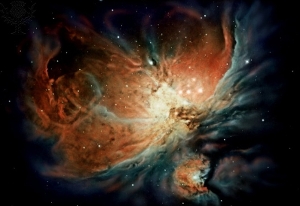Research project
Astrochemistry and the Origin of Planetary Systems
What is the origin of planetary systems?
- Contact
- Ewine van Dishoeck
- Funding
-
 ERC Advanced Grant
ERC Advanced Grant

When interstellar clouds collapse to form new stars and planets, the surrounding gas and dust become part of the infalling envelopes and rotating disks, thus providing the basic material from which new solar systems are made. Instrumentation to probe the physics and chemistry in low-mass star-forming regions has so far lacked spatial resolution.
I propose here an integrated observational-modeling-laboratory program to survey protostars and disks on the relevant scales of 1-50 AU where planet formation takes place. The observations are centered on new data coming from the Atacama Large Millimeter / submillimeter Array (ALMA), and the analysis includes unique new data from key programs on Herschel, Spitzer and VLT that I am (co-)leading. The combination of millimeter and infrared data allows the full range of temperatures from 10-2000 K in star- and planet- forming regions to be probed, for both gas and solids.
The molecular line data are used as diagnostics of physical parameters (such as UV field, cosmic ray ionization rate, kinematics, mixing, shock strength, grain growth, gas/dust ratios) as well as to follow the chemistry of water and complex organic molecules from cores to disks, which ultimately may be delivered to terrestrial planets. The implications for the history of volatile material in our own solar systen and exo-planetary atmospheres will be assessed by comparing models and data with cometary taxonomy and, ultimately, feeding them into planet population synthesis models.
Altogether, this program will bring the link between interstellar chemistry and solar system and exo-planetary research to a new level. The project will train four PhD students in a truly interdisciplinary environment in which they are exposed to all aspects of molecular astrophysics and have access to ample ALMA expertise, and it will prepare two postdocs for future faculty positions.
